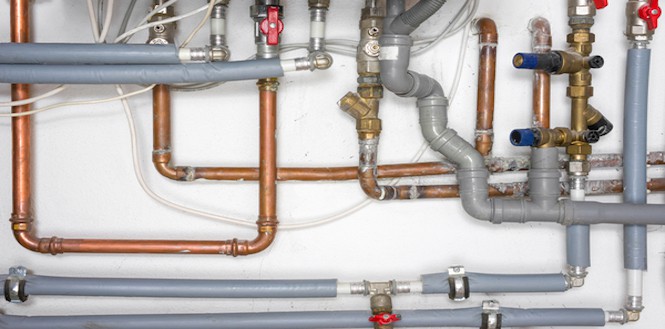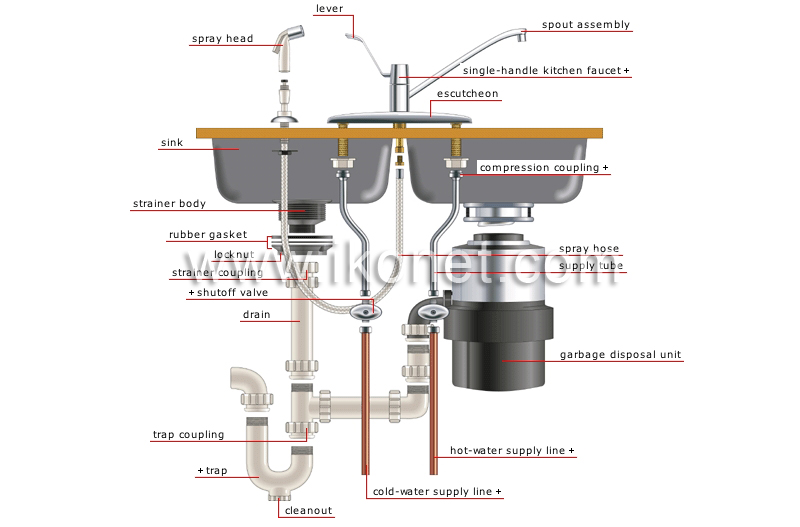The article author is making a number of good pointers related to Understanding Your Home's Plumbing Anatomy as a whole in this content just below.

Comprehending exactly how your home's plumbing system functions is necessary for each house owner. From providing clean water for drinking, cooking, and showering to safely removing wastewater, a well-maintained pipes system is vital for your family members's wellness and convenience. In this detailed overview, we'll discover the elaborate network that makes up your home's pipes and offer tips on maintenance, upgrades, and taking care of common concerns.
Intro
Your home's plumbing system is more than just a network of pipes; it's a complicated system that guarantees you have access to tidy water and efficient wastewater elimination. Recognizing its elements and how they work together can help you protect against expensive repair work and make certain whatever runs efficiently.
Fundamental Elements of a Plumbing System
Pipelines and Tubing
At the heart of your pipes system are the pipelines and tubing that lug water throughout your home. These can be made from numerous materials such as copper, PVC, or PEX, each with its benefits in terms of toughness and cost-effectiveness.
Fixtures: Sinks, Toilets, Showers, etc.
Components like sinks, toilets, showers, and bath tubs are where water is made use of in your home. Recognizing exactly how these components attach to the plumbing system aids in detecting troubles and preparing upgrades.
Shutoffs and Shut-off Factors
Shutoffs control the circulation of water in your pipes system. Shut-off valves are essential throughout emergency situations or when you need to make repairs, allowing you to isolate parts of the system without interrupting water circulation to the entire residence.
Supply Of Water System
Key Water Line
The main water line attaches your home to the metropolitan water system or an exclusive well. It's where water enters your home and is distributed to numerous fixtures.
Water Meter and Pressure Regulatory Authority
The water meter actions your water use, while a stress regulator guarantees that water streams at a secure stress throughout your home's pipes system, protecting against damage to pipelines and components.
Cold Water vs. Warm water Lines
Understanding the difference between cold water lines, which provide water directly from the major, and warm water lines, which bring warmed water from the water heater, assists in fixing and planning for upgrades.
Drain System
Drain Pipes Pipeline and Traps
Drain pipes bring wastewater far from sinks, showers, and toilets to the sewer or septic tank. Catches avoid drain gases from entering your home and additionally catch debris that could create blockages.
Air flow Pipes
Air flow pipes enable air into the water drainage system, preventing suction that could slow down drain and cause traps to vacant. Correct air flow is important for maintaining the stability of your plumbing system.
Significance of Appropriate Drainage
Making sure correct water drainage protects against backups and water damages. Regularly cleaning drains and maintaining catches can prevent expensive repair services and expand the life of your pipes system.
Water Heater
Kinds Of Water Heaters
Water heaters can be tankless or standard tank-style. Tankless heating units warm water on demand, while tanks store warmed water for prompt use.
Just How Water Heaters Attach to the Pipes System
Comprehending exactly how water heaters connect to both the cold water supply and hot water distribution lines aids in detecting problems like inadequate hot water or leakages.
Maintenance Tips for Water Heaters
Frequently flushing your hot water heater to get rid of sediment, examining the temperature level settings, and evaluating for leakages can extend its life expectancy and enhance power effectiveness.
Common Pipes Issues
Leakages and Their Reasons
Leaks can occur because of aging pipelines, loose installations, or high water pressure. Resolving leaks promptly stops water damage and mold and mildew development.
Clogs and Clogs
Clogs in drains pipes and bathrooms are frequently brought on by purging non-flushable products or an accumulation of oil and hair. Using drainpipe displays and being mindful of what goes down your drains can protect against blockages.
Indications of Pipes Problems to Look For
Low water stress, slow drains pipes, foul odors, or abnormally high water costs are indications of prospective plumbing troubles that ought to be dealt with promptly.
Pipes Upkeep Tips
Normal Inspections and Checks
Arrange annual plumbing inspections to catch concerns early. Try to find signs of leakages, deterioration, or mineral buildup in faucets and showerheads.
DIY Maintenance Tasks
Straightforward tasks like cleaning tap aerators, checking for bathroom leaks utilizing color tablet computers, or insulating subjected pipelines in cold environments can prevent major pipes concerns.
When to Call a Professional Plumbing Technician
Know when a plumbing problem calls for professional know-how. Trying complex repair services without correct understanding can cause even more damages and higher repair work expenses.
Updating Your Pipes System
Reasons for Upgrading
Upgrading to water-efficient fixtures or changing old pipelines can boost water top quality, decrease water expenses, and boost the worth of your home.
Modern Pipes Technologies and Their Advantages
Explore technologies like wise leakage detectors, water-saving commodes, and energy-efficient hot water heater that can conserve money and lower environmental influence.
Price Factors To Consider and ROI
Determine the ahead of time costs versus lasting savings when considering plumbing upgrades. Lots of upgrades spend for themselves through reduced utility bills and fewer repairs.
Environmental Effect and Preservation
Water-Saving Components and Home Appliances
Setting up low-flow faucets, showerheads, and bathrooms can considerably minimize water use without compromising performance.
Tips for Decreasing Water Usage
Simple habits like repairing leaks promptly, taking much shorter showers, and running complete tons of laundry and dishes can save water and lower your energy expenses.
Eco-Friendly Plumbing Options
Consider lasting pipes products like bamboo for floor covering, which is durable and environment-friendly, or recycled glass for counter tops.
Emergency situation Readiness
Steps to Take Throughout a Plumbing Emergency situation
Know where your shut-off valves lie and exactly how to turn off the water in case of a ruptured pipe or significant leak.
Importance of Having Emergency Situation Get In Touches With Handy
Maintain contact details for neighborhood plumbing technicians or emergency solutions readily offered for quick feedback during a pipes dilemma.
Do It Yourself Emergency Fixes (When Suitable).
Short-term solutions like making use of duct tape to spot a leaking pipeline or placing a container under a dripping tap can lessen damage up until a professional plumbing technician arrives.
Verdict.
Understanding the anatomy of your home's pipes system empowers you to maintain it efficiently, conserving time and money on repair services. By complying with normal maintenance regimens and staying educated about modern-day plumbing modern technologies, you can ensure your plumbing system runs efficiently for many years to come.
Understanding Your Home Plumbing System: A Comprehensive Guide
Plumbing System: The Lifeline of Your Home
At its core, the plumbing system is designed to perform two primary functions: bring fresh water into your home and remove wastewater. The system is a network of pipes, fixtures, and other components that transport water and sewage. Residential plumbing systems include potable water supply lines, drain-waste-vent (DWV) systems, and various plumbing fixtures that make water use in daily tasks possible.
Key Components:
Water Supply: This part of your plumbing system brings municipal water into your home, passing through the main water supply line. It s responsible for supplying all water needs, from drinking to bathing.
Drainage System: It carries waste and water away from your home to the sewer or septic system. This system includes all the piping within your home that leads to external sewage or septic systems.
Vent System: An essential yet often overlooked component, the vent system allows sewer gases to escape and lets air into the drainpipes, ensuring water and waste move correctly through the system.
Fixture: More Than Just Taps and Toilets
Plumbing fixtures are the most interactive parts of the plumbing system, including faucets, showers, toilets, and sinks. Each fixture is connected to the plumbing system and plays a role in either the delivery of freshwater or the disposal of waste and wastewater.
Types of Fixtures:
- Faucets and Sinks: Used for washing hands, dishes, and other daily water needs.
- Toilets: Dispose of human waste through the sewage system.
- Bathtubs and Showers: Provide bathing facilities, requiring both hot and cold water supply.
Water Supply: The Source of Life
The water supply system is a critical component, ensuring that potable water is available throughout your home for various uses, including drinking, cooking, and cleaning. This system consists of pipes that distribute water to different parts of the house, controlled by valves to regulate the water flow.
Types of Plumbing: Materials and Methods
Various types of plumbing systems and materials are used in residential settings, each with its advantages and applications. From copper and PVC pipes for water supply to cast iron and ABS for drainage, the choice of materials can impact the longevity and efficiency of your plumbing system.
https://intownplumbingtx.com/articles/home-plumbing-system-guide/

I was brought to that article about Anatomy of a House: Understanding the Components through an associate on a different blog. Enjoyed our entry? Please share it. Let someone else check it out. We value your readership.
Request An Estimate
Comments on “The Complete Look at Your House's Plumbing System Anatomy”